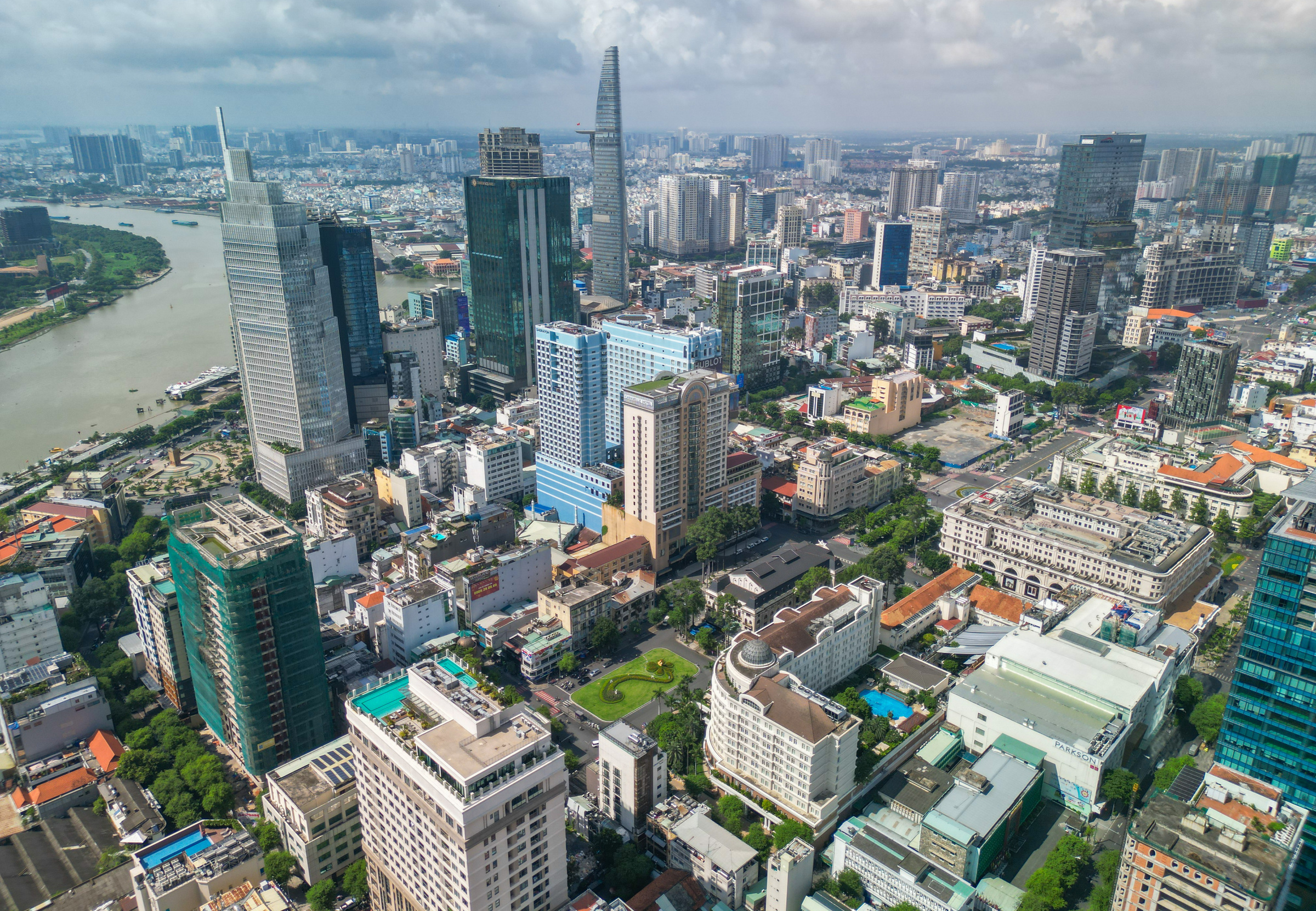Vinhomes reported a Q2 after-tax profit of 7,552 billion VND, a 30% decrease compared to last year. However, the company still boasted the highest profit in the real estate sector. The developer attributed this to the planned handover of key projects and bulk land sales primarily occurring in the second half of the year, impacting their first-half results.
Hoang Huy Investment Services Joint Stock Company (HHS) recorded the largest net profit growth in the real estate sector, at 3,075%. The company also ranked second in the industry, reporting a profit of over 3,500 billion VND.
In an explanation to the Ho Chi Minh City Stock Exchange (HoSE), HHS stated that in Q2, it acquired 99.9% of the shares of HHS Capital Joint Stock Company, which holds a 7.4% stake in CRV Real Estate Group Joint Stock Company (CRV). This increased HHS's ownership to 51.13%, making it CRV's parent company. Recognizing the fair value of investments in subsidiaries resulted in financial activity revenue of 3,504 billion VND during the period. This was the main reason for HHS's significant profit in the last quarter.
HHS, part of the Hoang Huy Group ecosystem, is known for distributing trucks and investing in real estate. After acquiring CRV, it became the owner of several large real estate projects in Hai Phong, such as Hoang Huy New City and Hoang Huy Grand Tower.
In addition to the above factors, SSI also noted that Novaland and Vingroup's reduced losses compared to the same period last year contributed to the improved overall industry profit. The two companies reported losses of 160 billion VND and 580 billion VND respectively in the last quarter, down 98% and 83% year-on-year.
In the industrial real estate segment, Viglacera and Kinh Bac experienced strong profit growth thanks to positive foreign direct investment (FDI) inflows. According to data from the Foreign Investment Agency (FIA) of the Ministry of Finance, total registered, adjusted, and contributed FDI capital, along with capital contributions and share purchases, reached over 21.51 billion USD in the first six months of the year—a 32.6% increase compared to the same period in 2024. SSI also pointed out that the gross profit margin of industrial parks improved due to adjustments in total investment levels, leading to a significant decrease in the cost of goods sold.
Despite the increase in profit, SSI's data revealed a 3.6% year-on-year decline in the real estate sector's revenue in Q2. In the housing segment, growth was clearly polarized, with results from large developers like Vinhomes, Nam Long, and Khang Dien falling behind the high baseline of the previous year. Meanwhile, some smaller-cap companies like Hodeco and Dat Xanh reported increased revenue.
According to SSI, the recovery of the housing market in the first half of the year stemmed from improvements in both supply and demand. The company stated that supply growth resulted from legal reforms, affecting both previously stalled projects and newly approved projects, including social housing.
Citing a CBRE report, SSI indicated that the new apartment supply in Ho Chi Minh City (pre-merger) and Hanoi is expected to reach 40,200 units in 2025 and 43,000 units in 2026, an increase of 11% and 7% respectively compared to the same period last year. Ho Chi Minh City is projected to contribute around 20,000 apartments between now and the end of next year. This suggests signs of market recovery.
Housing demand is also expected to improve thanks to relatively low home loan interest rates, ranging from 5.5% to 7.9% per year for the first one to three years, according to SSI.
In the long term, SSI believes that the real estate market still holds growth potential due to high housing demand. The analysis department noted the current low urbanization rate, which is expected to increase rapidly and reach 50% by 2030, with 1,000 to 1,200 urban areas.
 |
Real estate in central Ho Chi Minh City, 7/2025. Photo: Quynh Tran |
Regarding industrial real estate, SSI identified some challenges. The analysis department suggested that the pace of memorandum of understanding (MOU) signings may slow down in the second half of 2025 and is expected to remain so in 2026.
Potential tenants are cautious due to global macroeconomic uncertainties. According to SSI's survey of industrial park developers, the area covered by MOUs and new lease contracts at some units has decreased by 27% year-on-year. This decline will negatively impact revenue and profit recognition in 2026.
According to SSI's survey of major developers such as Kinh Bac, Idico, Long Hau, and Saigon VRG, rental prices at existing industrial parks are expected to remain stable in 2025. This reflects tenant caution and increased competition, affecting businesses in the sector.
Citing a CBRE report, SSI stated that average rental prices in northern industrial parks are expected to reach 145 USD per m2 for the remaining lease term of 2025, with an occupancy rate of around 82%. In the south, rent is expected to be 178 USD per m2 for the remaining lease term, with an occupancy rate of approximately 89%.
The securities company forecasts that the after-tax profit of listed industrial park developers will increase by 13% year-on-year in 2025. However, the decrease in new lease areas and the number of MOUs has impacted the profit outlook for some major developers like Viglacera, Becamex IDC, and Idico.
Trong Hieu












